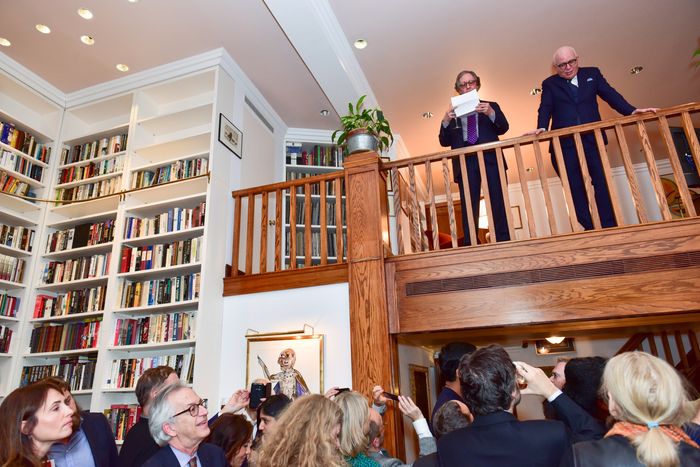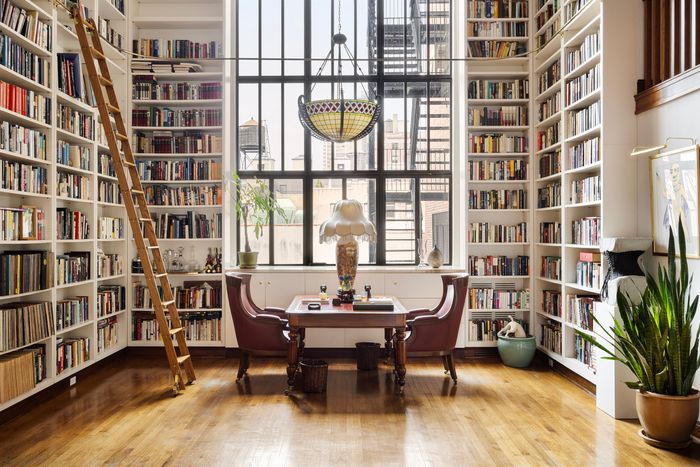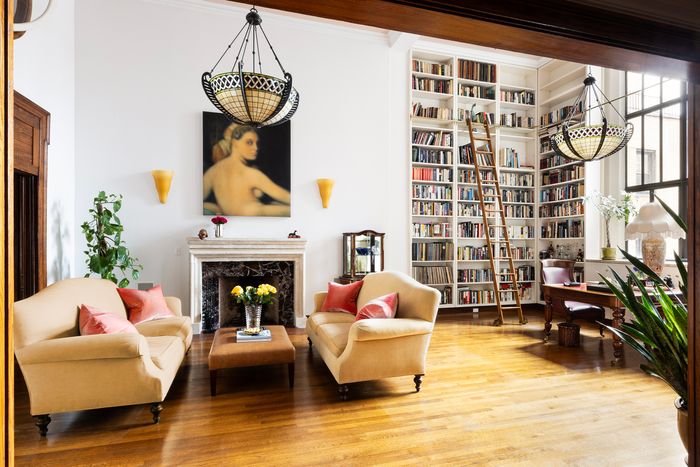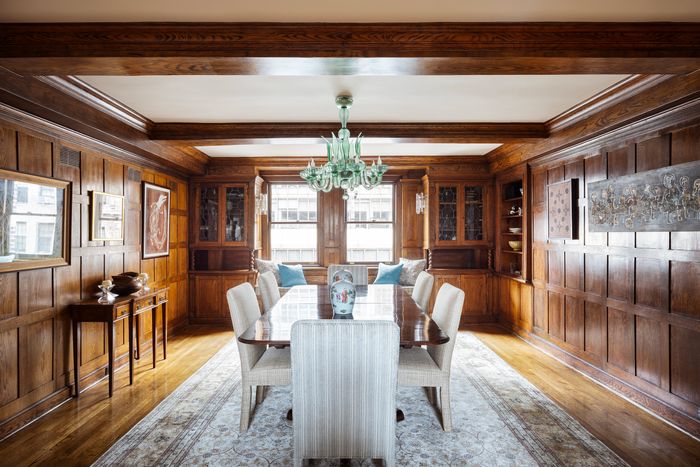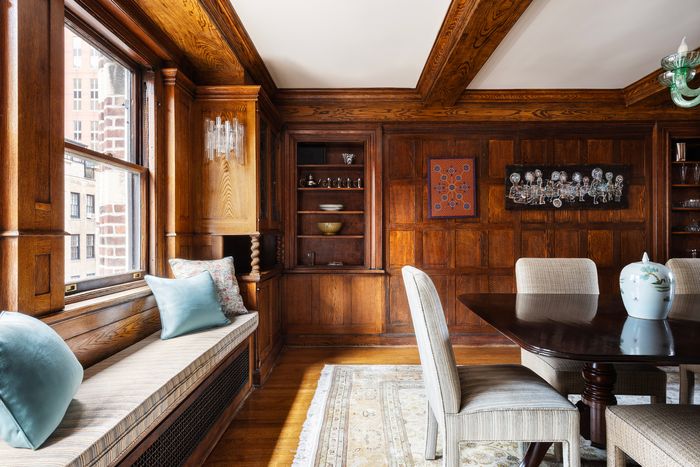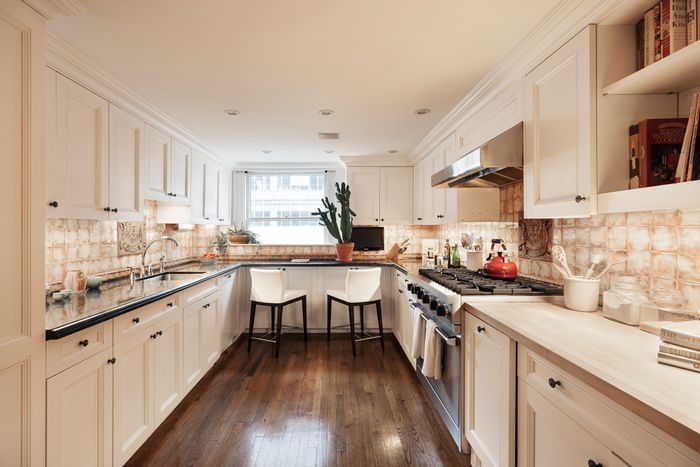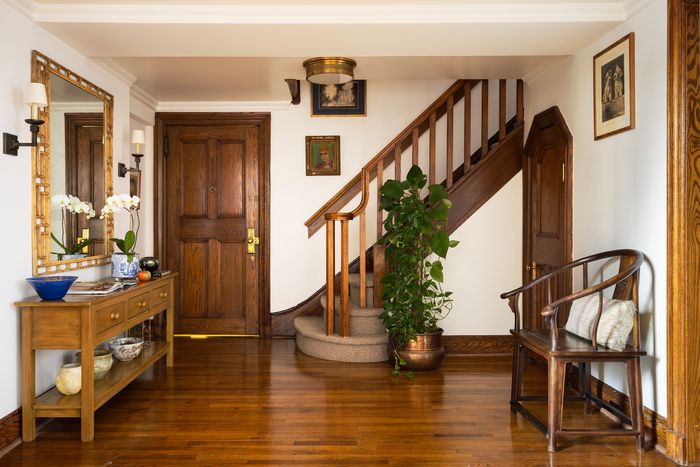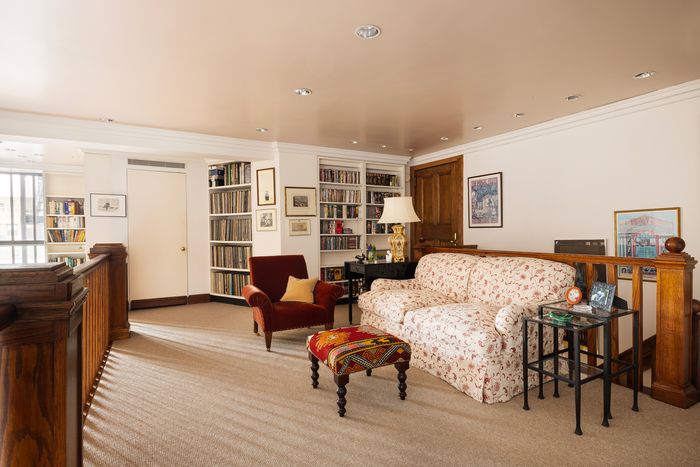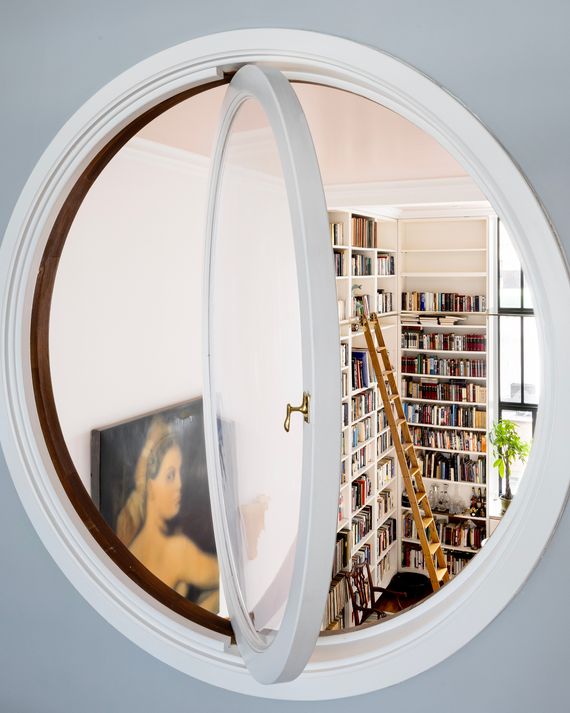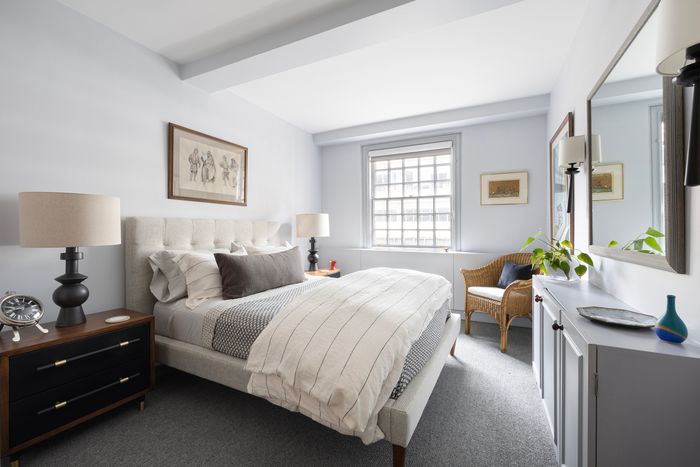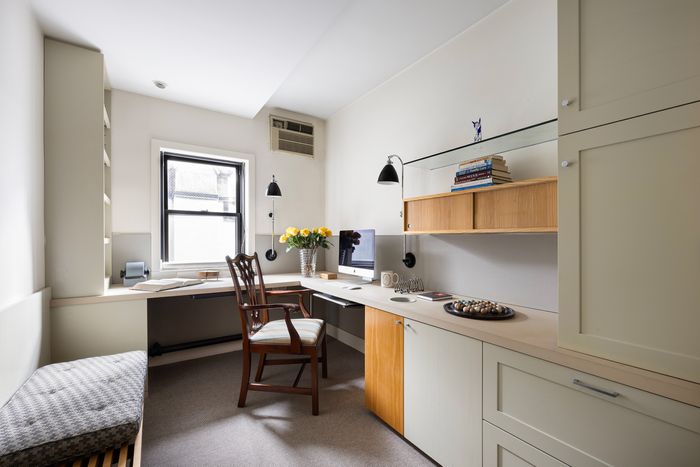Publisher Stephen Rubin’s 67th Street Studio Duplex


Photo: Brown Harris Stevens
The apartment on West 67th Street was what publishing impresario Stephen Rubin bought himself once he made it big. It was 1998, and he was returning from a stint in London to lead Doubleday. The place was showy in all the right ways — just off Central Park, with a high-ceilinged great room lit by double-high windows and the bona fides of a Beaux Arts building designed, improbably, for artists. (The 1906 brick-and-limestone building, which was modeled after the success of its more famous neighbor, the Hotel Des Artistes, has pulled in residents like Elizabeth Hardwick and Robert Lowell.) The dining room, paneled in oak, hosted dinner parties with authors, editors, and the celebrities and politicians whose memoirs Rubin was courting or celebrating. Crowds as big as 80 filled the place for book launches and were served by a kitchen large enough for a catering staff and a wine fridge tucked into a guest bedroom. When the apartment was buzzing, Rubin would quietly step away — then reappear on a balcony on the mezzanine floor, where in a trademark Paul Smith suit and owlish frames, he would lead a toast for whichever author was being celebrated that night. The swarm below could include anyone from Ann Coulter and Andrew Wylie (for the launch of Michael Wolff’s Fire and Fury), to Billy Joel and Billy Crystal (for industry memoirs). Even the Clintons were once guests. When Rubin fêted himself for his own memoir, which came out last January, the event drew Carl Bernstein and Susan Lucci.
Stephen Rubin and Michael Wolff on the balcony at a 2018 party for Wolff’s Fire and Fury.
Photo: Sean Zanni/Patrick McMullan via Getty Images
When Rubin died suddenly nine months later at age 81, he left his friends in shock and his apartment ready for the next party. “He was totally himself right until the time he wasn’t,” remembered Serena Jones, an editor who worked with him at Henry Holt and had been in the apartment a week before for a cocktail party that drew 50 people, estimated Rubin’s longtime caterer, Ann Dedman. When listing agent Jay K. Overbye walked in, he found an extra row of chairs in the dining room, ready to be pulled up to the table, and armchairs in the living room arranged for cocktails and conversation.
Rubin was known for his tailored suits.
Photo: Charles Sykes/Bravo via Getty Images
Dedman followed Rubin from an executive dining room at Doubleday, back when publishing offices regularly toasted authors in executive dining rooms. “When publishing stopped doing lots of book parties, he had book parties for almost everybody himself,” Dedman said. He was an ideal host, she said. “He had a mouth on him, and he’d just crack up these people and get them so relaxed.” Hillary Clinton evidently felt relaxed enough that she once came into the kitchen after dinner and said hello to Dedman and her staff. “It was that kind of casualness that he created,” she said. Rubin’s nephew, David Rotter, who happened to be visiting the apartment after that dinner with the Clintons, said when he asked how it went, Rubin said, “‘Bill would not shut up.’ He couldn’t care less. He was not starstruck.”
Rotter suspected that Rubin didn’t just choose the space for industry parties — if that were the case, he might have looked downtown. He believed he actually chose the duplex to stay close to his other passion, classical music. Rubin was raised in the Bronx by a mother who kept the radio tuned to classical WQXR. At 12, he went to his first performance at the Metropolitan Opera. He spent his 20s and 30s writing on opera and classical music for the New York Times and other publications, and at a 1966 interview with the Italian basso Cesare Siep, he met his wife, Cynthia Robbins, a music publicist. (She scolded him for arriving 15 minutes late.) She died in 2010 of lung cancer, and Rubin memorialized her by founding the Rubin Institute for Music Criticism. Some of the couple’s vast collection of classical records can still be spotted in custom shelving on the apartment’s cozy second floor. “There was always music playing in any space he was in,” remembered Rotter.
Rubin tallied that he published 4,000 books as a publisher at Bantam, Doubleday, and Henry Holt. He would sometimes work at this desk.
Photo: Brown Harris Stevens
The books, meanwhile, command the great room, where stripes of shelves stretch from the baseboards to the 17-foot-high ceilings. Rubin estimated that he published 4,000 books over his career — both towering literary achievements and smash hits. He took on Hilary Mantel’s Booker Prize–winning Wolf Hall and was friendly with Margaret Atwood and Ian McEwan, but was just as proud of publishing The Devil Wears Prada and The Da Vinci Code. Jones, the editor who worked with him at Henry Holt, credited his good picks to a fearless ability to follow his gut reaction to a text, regardless of the author’s stature or what other editors thought. “He was unflappable,” she said.
Though there was one thing that flapped him, she said. Parties were often so chatty at 67th that the guests wouldn’t leave. “He hated when people overstayed their welcome,” Jones said.
Rubin could often be seen reading on a couch beside the wood-burning fireplace, which has a 17th-century French stone mantel added by a previous owner.
Photo: Brown Harris Stevens
The dining room hosted intimate dinner parties with illustrious guests including the Clintons. The chandelier is Venetian glass.
Photo: Brown Harris Stevens
The oak paneling was here when Rubin bought it, and is English oak.
Photo: Brown Harris Stevens
Rubin cooked, but for parties he relied on Ann Dedman and her staff, who spent thousands of hours working here.
Photo: Brown Harris Stevens
The front door (left) opens into a low-ceilinged foyer that feels cozy and intimate, but looks out into the great room with its massive windows. “It’s just this protective zen-like space,” said listing agent Jay Overbye. “It’s kind of like you’re stepping through a portal into the past.”
Photo: Brown Harris Stevens
When not used for parties, the balcony was where Rubin and his wife, Cynthia, would watch television and listen to music; some of their vinyl records are tucked into an angled shelf.
Photo: Brown Harris Stevens
A door off the mezzanine floor leads to the primary bedroom. A walk-in closet, not pictured, housed Rubin’s tailored suits and is big enough to become a third bedroom, says Overbye.
Photo: Brown Harris Stevens
A portal-style window in the primary bedroom is unique to the building and peers into the great room.
Photo: Brown Harris Stevens
The guest bedroom downstairs. Nieces and nephews would often visit.
Photo: Brown Harris Stevens
Apartments in the building come with a separate studio unit on an upper floor, which were designed to be bedrooms for maids. Rubin turned his into an office hideaway. Near the end of his life, he wrote a memoir, Words and Music: Confessions of an Optimist.
Photo: Brown Harris Stevens
Source link

